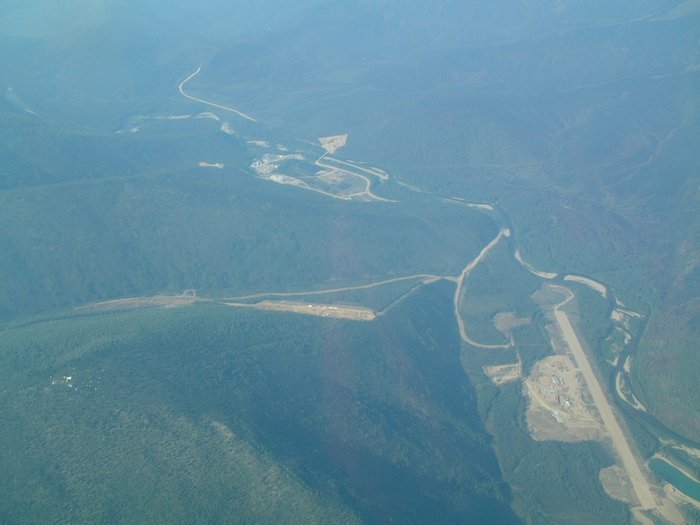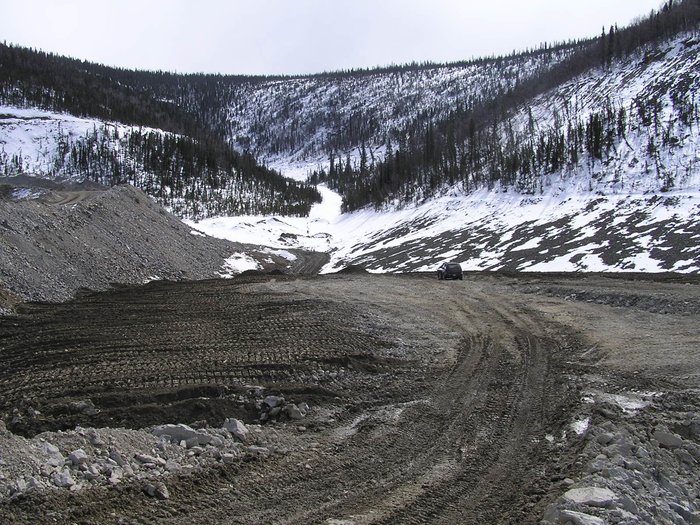

Summary
The Pogo Mine is a large gold mine located in Interior Alaska, which produces around 400,000 ounces of gold per year. This mine is one of the largest producers of mining waste in Alaska, and one of the largest mercury polluters in the country.
Mine Information
Pogo Mine began production in 2006 with an anticipated operating life of 10 years. However, this operating life has been extended by the exploration of nearby deposits. The mine employs around 300 people and is the most productive gold mine in Alaska. The Japanese-based Sumitomo Metals Mining Co. Ltd. has owned and operated the mine, since Canadian-based Teck Resources Limited sold out their share in the project in 2009.
The underground gold mine is located about 85 miles southeast of Fairbanks, and 38 miles northeast of Delta Junction. Pogo Mine receives electrical power (around 14 MW) from the regional grid and is connected to the state road system which it uses to transport gold dores off-site for further processing.

Environmental Concerns
According to the EPA’s “Toxic Release Inventory (TRI)”, Pogo Mine is the fourth-largest producer of mining-related toxic waste in Alaska (behind Red Dog Mine, Fort Knox Mine and Greens Creek Mine). Pogo mine is one of the 10 largest producers of mercury waste in the US and the mine uses cyanide for purification of the gold.
The mine expects to produce over 11 million tons of mine tailings waste over it’s operating lifetime. Half of the tailings are placed back into the mine, and the other half into a dry stack tailings pile in a nearby creek. An estimated 10% of the tailings contain leftover cyanide and are mixed with cement before going back in the mine. As with the Kensington Gold Mine, the decision by the EPA to allow the placement of “non-hazardous” mining waste into a natural water body prompted an outcry by environmental groups. In this case a settlement was reached that allowed deposition of the tailings in the creek, but required extensive water and fish monitoring by the mine. The EPA required Teck to form a “Pogo Stakeholders Group” composed of representatives with an interest in Pogo Mine, including hunting, fishing, conservation, and local residents. This group regularly reviews environmental practices at the mine.
Acid Mine Drainage
_
…Acid mine drainage is a major problem with many hardrock mines, including almost all mines where the metal ore is bound up with sulfur (metal sulfide mines)…
…In particular, 90% of the studied mines that originally predicted “low acid mine” drainage potential had acid mine drainage problems at the time of the study…
…an additional problem can also be created when the acid reacts with rock that neutralizes it…
_
Acid mine drainage was not predicted to be a problem at the Pogo Mine due to the high neutralization potential of the surrounding rock, and has not been detected to date. However, it should be noted that in many cases acid generation can take years to develop, and in the event of acid production at Pogo, the reclamation bond posted by the mine would be seriously inadequate for continued water purification and monitoring.
Further Reading
Created: Jan. 19, 2018